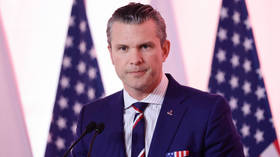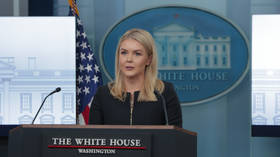Eyes wide shut on the Balenciaga scandal

The scandal provoked by Balenciaga’s latest advertisement campaigns can be seen as superfluous or understandable, but the real scandal may lie in the way some media outlets have been covering it.
In November 2022, Balenciaga posted an ad campaign on Instagram that featured children holding teddy bears dressed in BDSM gear, and another one in which a bag sits amongst papers that include a text from a Supreme Court opinion in the Ashcroft v. Free Speech Coalition case. The case examined whether laws banning the promotion of child pornography were in line with the First Amendment. The French luxury company apologized, deleted the posts together with its entire Instagram account and took legal action against the set designer, arguing that he was solely responsible. They have, however, already dropped it.
The scandal was as intense as it was brief. People got into analyzing the pictures more closely, even spotting what they interpreted as a drawing of the devil, the name of Baal and a “Satanic cult” cloak. Others focused on social media posts by Balenciaga designer Lotta Volkova, which apparently include imagery reminiscent of the controversial teddy bear ads, as well as gore and other questionable content (Volkova has since stated she hasn’t worked with Balenciaga since 2017 and condemns child abuse in any form). Even Kim Kardashian got emotional, though she didn’t go as far as to cut her own ties with Balenciaga. Like with the Epstein-Maxwell case, all the elements are in place for the concerned public to loudly denounce child abuse by powerful people.
One should watch or rewatch ‘Eyes Wide Shut’, as it seems more relevant than ever. And not only because Nicole Kidman is the new face of Balenciaga. Stanley Kubrick’s last movie is usually described as a simple “erotic psychological drama,” but there is more to it. Indeed, the director’s sudden death left the door open to deeper interpretations. His attention to detail was such that it is easy to think he intended to somehow depict child trafficking and prostitution rings run by powerful elites. The teddy bears are one of the details, of course, but there is another, very subtle one, hinting at the fashion industry. Towards the end of the movie, in the article that Tom Cruise’s character reads about the sudden death of a beauty queen, we can see that she was involved with some fashion designer named “Leon Vitali.” Leon Vitali was an old friend of Kubrick’s in the real world and had nothing to do with fashion. But he was the actor playing the red-cloaked master of ceremonies during an orgy Cruise’s character saw earlier. Ironically enough, we get this information in the movie from a newspaper.
Besides the poor taste and the questionable intentions of Balenciaga, the real scandal lies in the coverage of the luxury brand’s case by some major media outlets. Journalists used to investigate how the elite operate. Not anymore. They have been either depicting the campaign as “considered by some people as offensive” or as having “ignited a firestorm […] fueled by allegations that Balenciaga condoned child exploitation,” as the New York Times wrote. The American outlet goes on to emphasize the brand’s apologies and its plea to “engage with advocacy groups who aim to protect children” and calling people embroiled in scandals “trolls” or “QAnon” supporters. French newspaper Le Monde went so far as to say that Balenciaga was living a “nightmarish Christmas” and outraged people were spreading fake news. No one seemed to even wonder why Balenciaga had already dropped its legal action against the set designer. Luckily, The Conversation has been here to explain what “shockvertizing” is: “Shockvertising strategies allow adverts to be seen by millions of potential consumers despite being aired for only a limited amount of time before being taken down. As the current Balenciaga controversy demonstrates, the way to make paid advertising work harder is to get it talked about for free.” The Conversation piece doesn’t seem to care about kids being used to “shock” people or acknowledge that most people can’t afford Balenciaga’s products. Business as usual, move along, nothing to see! Three weeks after the scandal, it is like nothing happened. And French financial newspaper Les Echos can easily publish an article entitled “The ethical object: Balenciaga’s coat made out of mycelium.” The questionable ad with kids is ancient history: Balenciaga thinks about the climate!
Why are these stories so quickly swept under the carpet by the media? In 1968, the famous French designer Yves Saint Laurent published a comic book, ‘La Vilaine Lulu (Nasty Lulu)’, which tells the grim story of a little girl going through murders, masturbation, pedophilia, ritual sacrifices and rapes (one can easily check its content on Google). At the time, it caused public outrage. Nowadays, it is depicted as a critique of modern society by a very sensitive creator. OK. That may be. Most people have never witnessed ritual sacrifices, murders and rapes of children, though. It seems that people working in the fashion industry share common references or fantasies. And journalists do not see any problems in them. This is quite intriguing in an era in which sexual abuses and misconducts are denounced to such an extent that men hesitate more and more to engage in flirting.
The problem is really not so much the fantasies of people running a company making clothes for rich people. The problem is that journalists are letting it slide, only getting to work when Kim Kardashian gets emotional.
The statements, views and opinions expressed in this column are solely those of the author and do not necessarily represent those of RT.















